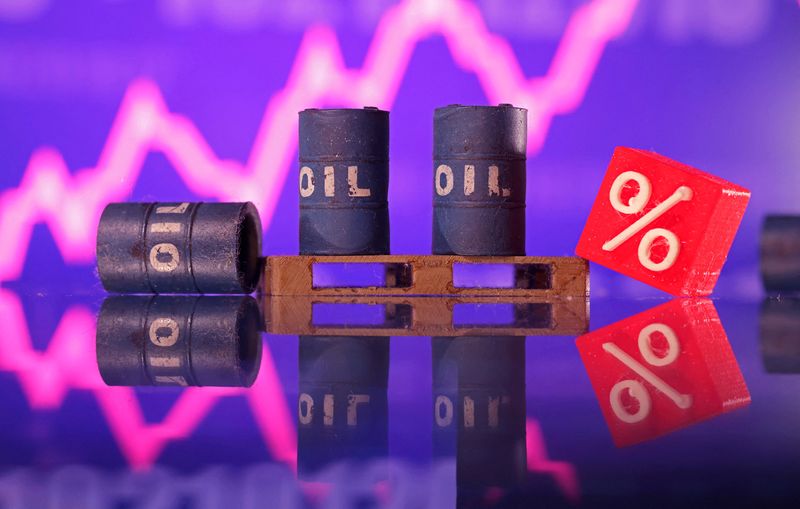Oil steady as investors gauge impact of China's stimulus to boost demand
By Arunima Kumar and Jeslyn Lerh
(Reuters) - Oil prices were little changed on Wednesday as investors reassessed the ability of China's stimulus plans to boost its economy, while declining U.S. crude oil and fuel stockpiles provided support.
Brent crude futures were down 8 cents, or 0.1%, at $75.09 a barrel at 0844 GMT. U.S. West Texas Intermediate crude was down 13 cents, or 0.2%, at $71.43 per barrel.
Prices rose by about 1.7% on Tuesday after China announced its most aggressive economic stimulus since the COVID-19 pandemic, with interest rate cuts and government funding.
Analysts, however, warned that more fiscal help was needed to boost confidence in the world's second-largest economy and that eroded the initial impact on oil prices.
"The lack of a more concrete fiscal approach still instils some reservations over whether the economic boost can be sustained," said Yeap Jun Rong, market strategist at IG.
Yeap said there was an overall lack of traction to the oil market, with trades lower than usual, which was likely also due to a drop in U.S. consumer confidence. It fell in September to its lowest in three years, with particular concern about the availability of jobs.
"Market participants (are) questioning if the latest stimulus measures by the People's Bank of China are enough to support Chinese economic and oil demand growth," said UBS analyst Giovanni Staunovo.
"I still see further upside for crude prices, with oil inventories still falling globally," he added.
U.S. oil stockpiles fell by 4.34 million barrels last week while gasoline inventories dropped by 3.44 million barrels and distillate stocks were down by 1.12 million barrels, according to market sources citing American Petroleum Institute figures on Tuesday.
In the Middle East, an intensifying conflict between Iran-backed Hezbollah in Lebanon and Israel also supported crude prices, with cross-border rockets launched by both sides increasing fears of a wider conflict.
A hurricane threatening the U.S. Gulf Coast has changed course towards Florida and away from oil and gas-producing areas near Texas, Louisiana and Mississippi.
Source: Investing.com
